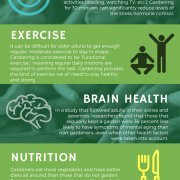Your day has spiraled into a cyclone of stress. Nothing seems to be going right. Everything sparks fits of frustration. Who is going to throw you a lifeline? What will pull you out of the gravitational grip of your bad day?
Frequently, it’s your pet.
That’s one of the great benefits of pet ownership. They can melt your stress away. Cuteness, cuddles, and unconditional support after a hard day is just the start of what your pet can do for you. The anecdotal evidence of pet-owner benefits is backed up by plenty of evidence of how pets can improve overall health.
Whether you’re single, have children, are young, elderly, or have special needs, research shows having an animal you love is good for your mental, emotional, and physical health. If you aren’t allergic to them, pets are good, healthy additions to your family.
Physical Benefits of Owning a Pet
Exercising, caring for, and just being around pets can boost your overall physical health, lower your risk of developing certain heart-related issues, and ease your aches and pains.
- Pet owners have a better level of fitness. You won’t burn a whole lot of calories watching your pet fish swim around in its bowl. But if you have a dog, you’re likely getting more exercise than those who don’t. Turns out that knowing your pet needs exercise is a powerful motivator to get out and walk. About half of dog owners get at least 30 minutes of exercise per day, five days per week. That’s the recommended amount. And the benefits don’t stop there. Dog walkers also tend to partake in other physical activities, like sports and gardening. They also walk more vigorously than when walking alone, and saw a greater improvement in fitness than those who walked with a human companion. People often talk each other out of getting exercise, but we don’t try to make those lame excuses to our pooches.
- Pets improve your heart health. Watching a cute kitten play or snuggling a fluffy dog can be heartwarming. It can also just be plain good for your heart. Pet owners are more likely to have lower resting heart rates and blood pressure than those who are pet-free. And having a dog can increase your likelihood of survival a year after a heart attack. Cats are particularly good for your circulation and cardiovascular health. Studies show that owning a cat at some point in your life can decrease your odds of dying from a heart attack. Cat owners also tend to have fewer strokes. While they fill your heart with love, pets also help keep your heart strong.
- Pet owners see lower cholesterol and triglycerides levels. Lower cholesterol and blood sugar go hand-in-paw with better fitness and heart health. They are two more benefits pet ownership can bring you. This could be, in part, because pet owners tend to be more active. Pets also have been known to warn their diabetic owners ahead of dangerous drops in blood sugar—about one third of dogs with diabetic owners have shown this ability.
- Chronic pain sufferers find some relief when they own pets. Research is unclear as to why pets appear to make it easier to cope with painful conditions like rheumatoid arthritis. Some suspect that caring for a pet helps take your mind off your discomfort and problems. Additionally, when you snuggle up against a warm pet, the heat can soothe pains associated with conditions like fibromyalgia.
- Animals help children build up stronger immunity. Research shows that children who grow up in a household with a dog, cat, or on a farm with livestock are less likely to have allergies. Although pets can be one of the common triggers for asthma, researchers say babies that grow up in a house with a cat are actually less likely to develop the condition when they’re older—unless the mother is allergic to cats.
Emotional Benefits of Having a Pet
The most common reason people get pets is pretty simple: pets just make you feel good. Yes, they’re cute and cuddly. But the science behind all the fuzzy feelings they give you goes much deeper.
- Pet ownership gives you stability. You know what to expect from your pets—unconditional love. They are always happy to see you. They shower you with sloppy kisses and attentive purrs. Knowing that you have someone who loves you at home gives you a sense of security and stability. Even if the rest of your world is chaos at the moment, having a loving relationship—even if it’s with a pet—can keep you grounded enough to cope. People with loving relationships toward their pets (it doesn’t count if you find them to be a burden or nuisance) also are more likely to be more confident in their day-to-day lives and have higher self-esteem.
- Being around animals improves your mood. Throw a ball for a dog. Pet a bunny. Watch a fish swim or a turtle mosey around. You’ll feel calmer and less frantic in a jiffy. Just interacting with a pet can decrease the stress-inducing hormone cortisol and increase the feel-good hormone serotonin. You already know (from what you read above) that owning a pet can lead lower blood pressure. But that’s especially true during times of high mental stress, when pet owners are more likely to keep a lid on their blood pressure. Consider taking a break with Fido an instant chill pill.
- Pets make you feel happy. You know that gooey feeling you get when you stare deeply into your pet’s eyes and it lovingly stares back? That triggers the same hormonal feedback loop that a mother and her newborn baby feel when they gaze at one another. This release of oxytocin, also known as the love hormone, helps you bond to your pet and vice versa. It makes you feel happy, secure, and well. If you feel like your pet is your best friend—or even your child—now you know why.
- Growing up with a pet helps children develop empathy. Parents have long used pets to teach their children the responsibilities of physically taking care of someone else. Research shows that is just the start, because having a pet also improves kids’ emotional intelligence. The bonding hormones discussed above help children relate to a creature other than themselves. That helps kids learn to care for the feelings of their pet in addition to their physical needs. These lessons in empathy will help kids relate better to humans as they grow up. Children who have higher emotional intelligence tend to be more successful later in life.
Mental Benefits of Owning a Pet
Living with a pet not only helps keep your body healthy. It also helps ease what so often ails your mind. Pets get you out into the human world, help you work through mental afflictions, and, as you get older, help you stay cognitively sharp.
- They make you more social. Pets give you an excuse to get out, get moving, and talk to people. Most people have strong emotions about their pets and sharing that with fellow pet lovers creates an instant sense of community. Dog parks, pet daycare centers, and online pet forums can give people an outlet to connect with others. In addition to being great companions themselves, pets can lead their owners to forging new bonds with fellow human beings. In this way, pets help banish feelings of loneliness in more ways than one.
- Pets provide forms of therapy. Research done on kids with autism show they are able to be more social and less anxious when they have therapy animals nearby. And as the bond grows between a pet and a child on the autism spectrum, the child becomes better at sharing with others and offering comfort to those in need—when compared to similarly-afflicted children who don’t have a pet in the house. For kids with ADHD, caring for a pet can help the child learn to plan ahead and schedule things like daily feedings. Getting outside and playing with a dog can also help an ADHD-afflicted child burn off extra energy, which helps them focus later in the day. For those with PTSD, grooming and riding horses has been found to lessen their stress.
- Pets ease the struggle of addiction recovery. Addiction experts increasingly are suggesting their patients get service dogs. One reason is that pets help you stay in the here and now. This mindfulness engages your prefrontal cortex—the part of the brain responsible for executive function. The more that part of the brain is activated, the more you are able to make healthy choices and develop good habits. In other words, having a pet can help you replace negative, destructive habits with positive ones.
- Dogs help boost cognition in seniors. In older adults, having a pet—a dog, in particular—can help keep memory and other mental functions intact longer. A study by the University of Richmond found that dog owners over the age of 65 performed better on cognitive and memory tests than those their age who didn’t own a dog. Some theorize this is because dogs keep you physically active, plus you have to remember to provide care in the form of daily tasks: feeding, walking, and playing.
No matter the type of pet, forging a loving bond with another creature does wonders for your holistic well-being. The research is pretty clear that pets can improve your overall health. With all the benefits of having a pet—to your health and your life—it’s no surprise so many people view them as a cute, cuddly, and essential member of the family.
References
https://well.blogs.nytimes.com/2011/03/14/forget-the-treadmill-get-a-dog/?_r=0
https://www.cdc.gov/healthypets/health-benefits/index.html
https://pets.webmd.com/ss/slideshow-pets-improve-your-health
https://www.health.harvard.edu/staying-healthy/the-health-benefits-and-risks-of-pet-ownership
https://news.heart.org/simplescienceheart-walking-your-dog-helps-your-heart/
http://www.strokesmart.org/article?id=221
https://www.ncbi.nlm.nih.gov/pmc/articles/PMC3609496/
https://www.ncbi.nlm.nih.gov/pmc/articles/PMC4528099/
https://www.pediatrics.wisc.edu/featured-stories/allergies
http://time.com/4728315/science-says-pet-good-for-mental-health/
http://animalsmart.org/species/dogs/dogs-help-reduce-stress
http://www.greenmedinfo.com/blog/latest-study-human-pet-bonding-says-you-may-be-under-spell-0
http://www.medicaldaily.com/children-autism-can-become-more-social-cat-their-side-343684
https://www.psychologytoday.com/blog/pills-dont-teach-skills/201102/pets-kids-add
https://www.recovery.org/pro/articles/how-pets-ease-the-stress-of-recovery/
https://psmag.com/social-justice/pets-can-boost-confidence-lower-stress-43767
https://stayingsharp.aarp.org/art/connect/17/pets-health-benefits.html
http://www.womansday.com/life/pet-care/a2352/10-health-benefits-of-owning-a-pet-116238/




























